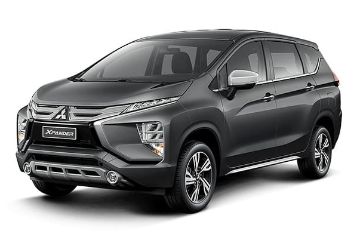![Xpander Kryptonite: Weaknesses of Mitsubishi's top-selling model 01]()
In today’s world, the fight between cars is always about who brings more to the table. The new generation of buyers – millennials, Gen Z, and even Gen Alpha – are looking more at spec sheet than performance, trading speed for sensibility and performance for practicality. The modern driver looks for things old cars don’t have, which might pose an issue for a vehicle such as the Mitsubishi Xpander.
Under the hood
![Xpander Kryptonite: Weaknesses of Mitsubishi's top-selling model 02]()
The Mitsubishi Xpander is part of a long line of MPVs targeted at new and returning families looking for space but not size. As such, it wasn’t intended to have bundles of power and performance, trading those off for fuel economy and serviceability.
In that regard, the 1.5-liter inline-4 engine and choice of five-speed manual or four-speed automatic were good enough for the purpose – robust, easy to work on, and uber-efficient.
Sadly, however, in 2023, that combination has been superseded by the 1.5-turbo that most of the Mitsubishi Xpander's more modern contemporaries have. This engine can provide the same level of fuel consumption but with a significant peak torque and power bump. When paired with Continuously Variable Transmissions or six-speed automatics, the 1.5-liter turbo can yield better performance with a good chance of better fuel consumption.
Case in point for this would be the Haima 7x, a 7-seater MPV that fights in the same class as the Mitsubishi Xpander but comes with 60% more horsepower and torque and with two extra gears – all of which add up to over 20 kilometers per liter in fuel consumption.
And though it may seem like a huge departure, truth be told, Mitsubishi does have a 1.5 turbo in its arsenal – the 4B40 inline-4 engine. Found in the Mitsubishi Eclipse Cross, this engine can make anywhere from 150PS to 163PS, and torque figures peak at a healthy 250 Newton-meters. Moreover, this engine can be had with a CVT or a six-speed manual, quite a clever combo should it find its way into the Xpander.
Gadgetry
![Xpander Kryptonite: Weaknesses of Mitsubishi's top-selling model 01]()
On the face of it, ditching features and gadgets to maintain a price point is a reasonable tradeoff. There are many things the average driver can do without, anyway. But these times, it’s a race to see who has the longer features list.
The hot ticket feature today is autonomous driving paired with active safety, which means the car can drive and stop itself under certain use conditions. They are usually useless but cool to have and take advantage of, for sure.
Adaptive cruise control and lane keep assist are fast becoming standard features for affordable cars. Autonomous emergency braking is also good, as are blind spot monitoring, rear cross-traffic alert, and even drowsiness monitoring are all things that sound good on paper, which translates to sales down the line.
Mitsubishi is no stranger to this technology either, fitting the Xpander’s bigger brother, the Mitsubishi Montero Sport, with these features since the launch of its third generation.
![Xpander Kryptonite: Weaknesses of Mitsubishi's top-selling model 02]()
And while we're at it, how about adding a few more airbags into the basic trim? Having just two is the bare minimum nowadays.
Still a best-seller
Overall, the current Mitsubishi Xpander did very well in providing the market with a reasonably priced option for those who may have little money. Last year, it sold 16,309 examples of the Xpander nameplate in 2022, which was the brand's best-selling model. So why mess with success, right?
To survive in the long term, however, Mitsubishi needs to consider offering the Xpander more than what it has now to entice and expand its market base. The market is slowly becoming more sophisticated, partly spoiled by China's heavily-featured yet affordable offerings. And soon, modern conveniences and safety tech will become the basic expectation of most car buyers.
A strong brand name can surely draw in numbers. But the day might come when that isn't enough. After all, a character without substance is like existence without purpose - meaningless.









